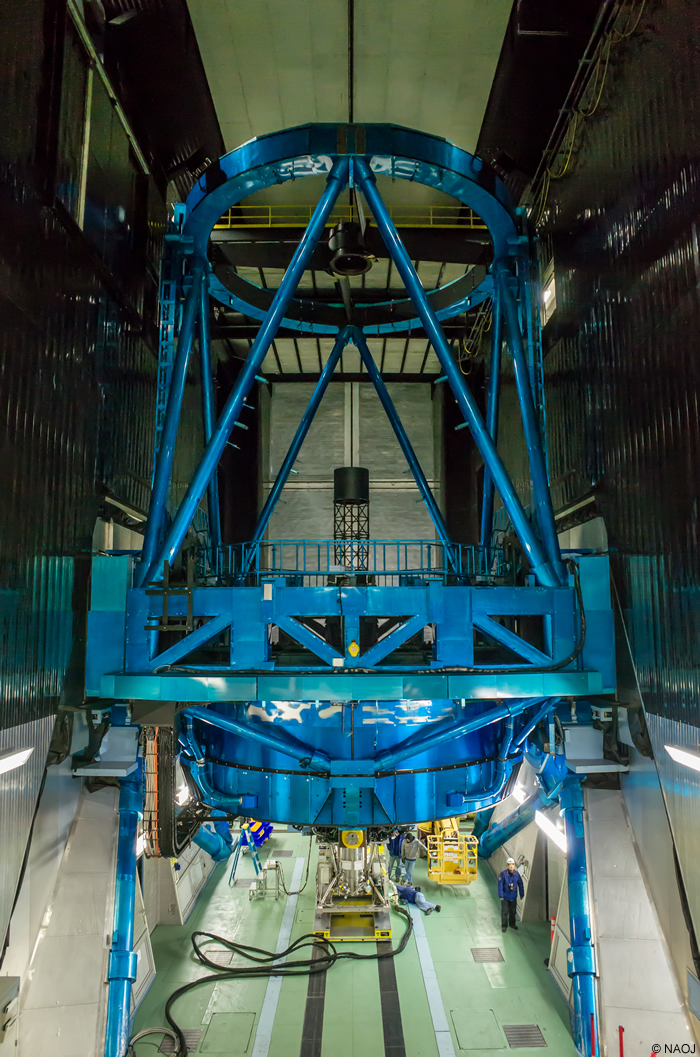Before Night Falls – A Candid, Behind the Scenes Look at the Subaru Telescopes
Photo・

| Date | July 30, 2013 |
|---|---|
| Camera | Ricoh GR |
| Exposure | f/2.8、1/60 second、ISO 1600 |
| Location | Subaru Telescope |
| Photographer | Shogo Nagayama |
| Copyright | National Astronomical Observatory of Japan |
NAOJ’s Subaru Telescope observes a variety of astronomical phenomena, from resolving galaxies in the early Universe 10 Billion years ago, to discovering extrasolar planets. Pursuing a plethora of research as one of the largest diameter telescopes in the world, the Subaru Telescope is equipped with multiple observational instruments. This is a picture of daytime work to prepare for the next observations. Thanks to the continuous stable operation displayed by the state of the art instruments, the Subaru Telescope can continue to produce a wide range of results. Engineering staff support the leading edge of astronomy.
The Power of an 8 Meter Diameter
On this floor of the Subaru Telescope which is off-limits during nighttime observations, the Day Crew (staff who perform everyday maintenance and instrument exchange) are working. The single piece 8.3 meter diameter mirror is inside the blue primary mirror cell at the base of the main body of the telescope. Seen in comparison to the people, you can understand its size.
Four Foci and an Variety of Observational Instruments
The Subaru Telescope has 4 foci. The Prime Focus is the first location where light gathers after being reflected by the concave primary mirror. The Top Unit (located in the center of the top of the telescope) can mount a camera to take advantage of the wide field of view available at the Prime Focus, or a secondary mirror to reflect the light to one of the other foci. But in this picture shows an unusual state where the Top Unit has nothing mounted on it.
The Cassegrain Focus at the rear side of the primary mirror can conduct observations with a variety of interchangeable observational instruments. In this picture, they are mounting COMICS (Cooled Mid-Infrared Camera and Spectrometer.) This instrument demonstrates prowess for observations of the solid components (cosmic dust) in locations where stars and planetary systems are forming. Additionally, the Nasmyth Foci, where heavy instruments can be mounted securely, are located on the right and left sides behind the walls.
Author: Seiichiro Naito (NAOJ Public Relations Center)